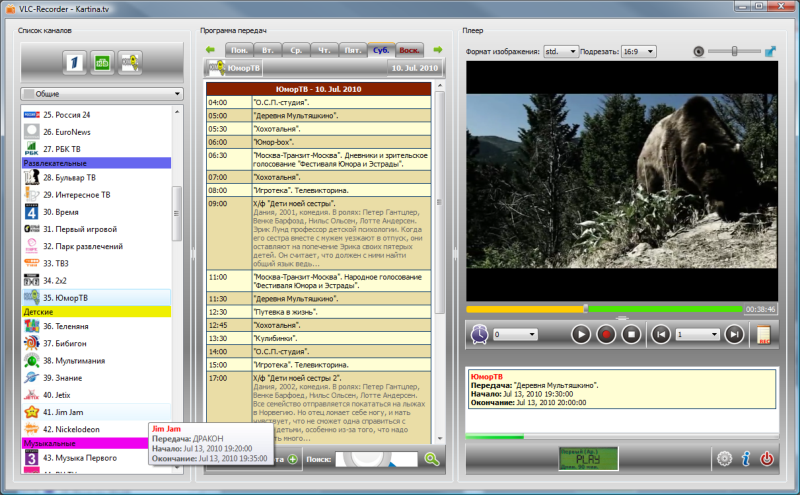

If you want to import the files you've been playing in VLC Media Player over to Windows Media Player, you need only to add these files to Windows Media Player's library. VLC Media Player is a type of audio and video playing computer program that is available for all operating systems.

You will then be asked what format to convert to: you can give a video codec, an audio codec and a container format. To transcode a file, just select the transcode option. VLC includes a transcoding and streaming wizard.
#Vlc recode how to
How to use VLC as a video converter to MP4 Browse to the video or audio file you want to convert and open it. Click “Add” to the right of the File Selection list on the File tab. To start converting, open VLC and click Media > Convert/Save. Select the desired codec from the profile list.In the "Convert" windows specify the destination file name (including file extension - e.g.Add the input file(s) or stream(s) you want to transcode.In VLC, go to "Media > Convert / Save." (Ctrl+R).What is the fastest way to convert MKV to MP4?.How long does it take to convert MKV to MP4?.Can Windows Media Player play VLC files?.Select the format from the Profile dropdown menu.From the Convert / Save dropdown at the bottom, select convert.Click the Add button on the right and find the video you'd like to convert.From the menu bar, click Media > Convert / Save….Assuming the switch supports multicast, for N receivers, a single packet will be sent from server to switch, and then the switch will send a copy of that packet to each of the subscribed receivers. Multiple computers can view the same stream by running the above client command. Similar to RTSP, adjust network caching to produce an acceptable trade-off of delay and smoothness. mux=ts - use MPEG Transport Stream for packetizing the video.port=5004 - port for receivers to connect to.dst=239.0.0.1 - a local multicast address that receivers will subscribe to.Similar options as when using RTSP, with the following additions:

Unicast Streaming with RTSP for Control and RTP for DataĬvlc -vvv v4l2:///dev/video0 -sout '#transcode' the computer with the webcam that we want to view) has IP address 10.10.16.201 and the receivers are 10.10.16.2xx, where xx is some number other than 01. I use cvlc on the server (I do not display the video and so no GUI) and vlc on the receiver.įor the following commands the server (i.e. I use the -vvv to produce extra verbose output you can safely remove it once you have the command that works for you. I was only interested in video, so audio was disabled in all cases. All tests involve client and server on the same LAN. client - switch - switch - switch - server) and were limited to 100 Mb/s to the central switch. Some tests involved client/server connected to the same switch using 1Gb/s links/switch, while others involved a hierarchy of switches (i.e. The webcams were Logitech C170 and identified as /dev/video0 by the operating system (if you have two or more webcams then it may appear as a different device). They were running Ubuntu 14.04 LTS and used VLC 2.1.4. HTTP, which are covered in some of my older notes) and the GUI is quite good for selecting streaming options.Īll commands were tested on PCs with Intel i5-4590 CPUs, 16GB of RAM and solid state drives. It focusses only on internal LAN streaming, using RTSP, UDP and RTP as the streaming solutions, and working via the command line in Linux. The following are notes on using VLC as both server and server to stream a webcam from a ender across a LAN to multiple receivers. Live Webcam Streaming using VLC on the Command Line


 0 kommentar(er)
0 kommentar(er)
